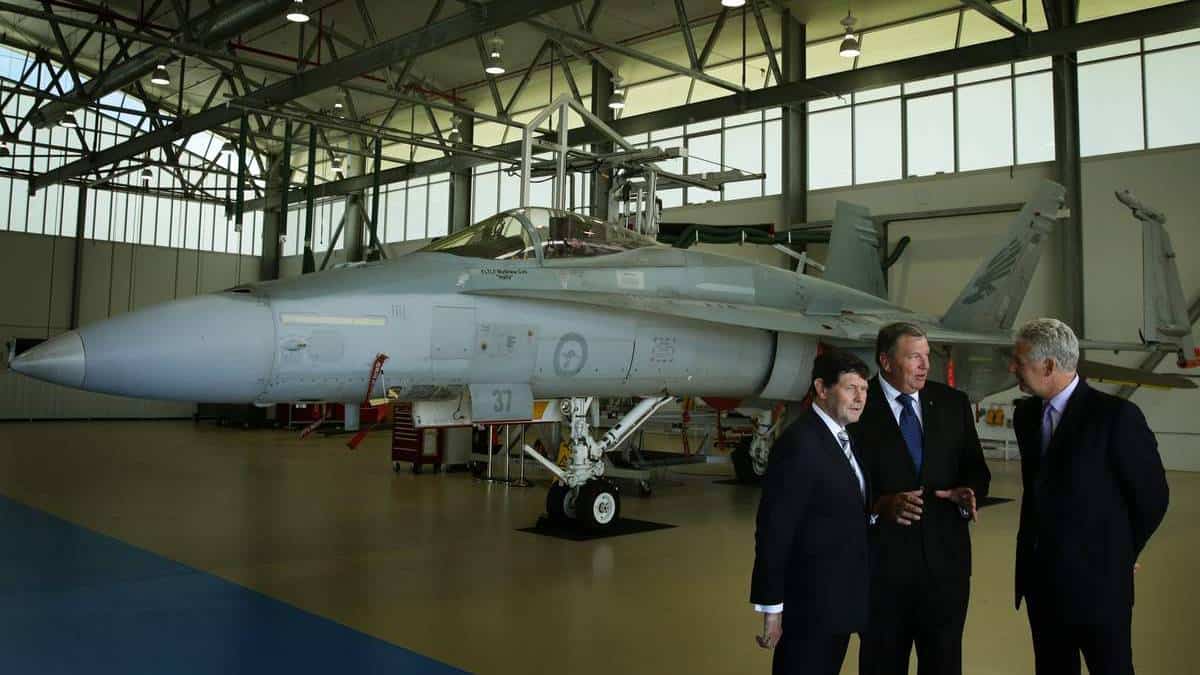DEFENCE contractor BAE Systems Australia expects to employ at least 250 more people at Williamtown when it starts maintaining the RAAF’s F-35A Joint Strike Fighters.
But with the first two planes of the $12.4 billion contract already in Australian hands, Defence Minister Kevin Andrews agreed with Paterson MP Bob Baldwin that the government was still to decide how best to extend the Williamtown runway to cope with the new generation jets.
The jobs prediction and the runway uncertainty were two of the more interesting points to emerge from Mr Andrews’ visit to Williamtown on Monday afternoon, his first trip to the facility since becoming Defence Minister on December 23.
The government says that almost $1 billion will be spent at Williamtown upgrading facilities to cope with the JSFs, which are being built in the United States by defence giant Lockheed Martin.
As part of his visit, Mr Andrews also opened a new $6 million Lockheed Martin facility, which will employ as many as 70 engineers and technicians supporting various RAAF radar and surveillance programs.
The Lockheed building is part of the privately developed Williamtown Aerospace Centre, next door to the partly-built airport motel.
Mr Andrews inspected radar equipment at Lockheed Martin before driving the few hundred metres to the BAE facility, which was established about 15 years ago to assemble and maintain the Hawk lead-in fighters. These replaced the ageing Macchi as the main RAAF trainer for pilots stepping up to the F/A-18 Hornet.
BAE System Australia chief executive Dave Allott took Mr Andrews through the facility, including one hangar he said would be tripled in size to take as many as seven JSFs at once.
BAE has been named as the main air-frame maintainer for JSFs in the ‘‘southern Pacific’’ region, and Mr Allott said the workforce would ‘‘at least double, if not more’’, as a result of the work.
Aircraft noise is a recurring problem for RAAF Williamtown and with the F-35As needing a longer runway, three plans have been considered.
Moving the runway, or building a second one, closer to the coast, were examined but rejected in the JSF environmental assessment.
A parliamentary public works committee also endorsed the RAAF’s favoured option, to extend the existing runway at either end, taking it from 2.4 kilometres to three kilometres.
Despite these recommendations, Mr Baldwin said the government had not made a final decision on the runway, a position confirmed by Mr Andrews
SOURCE: NEWCASTLE HERALD

